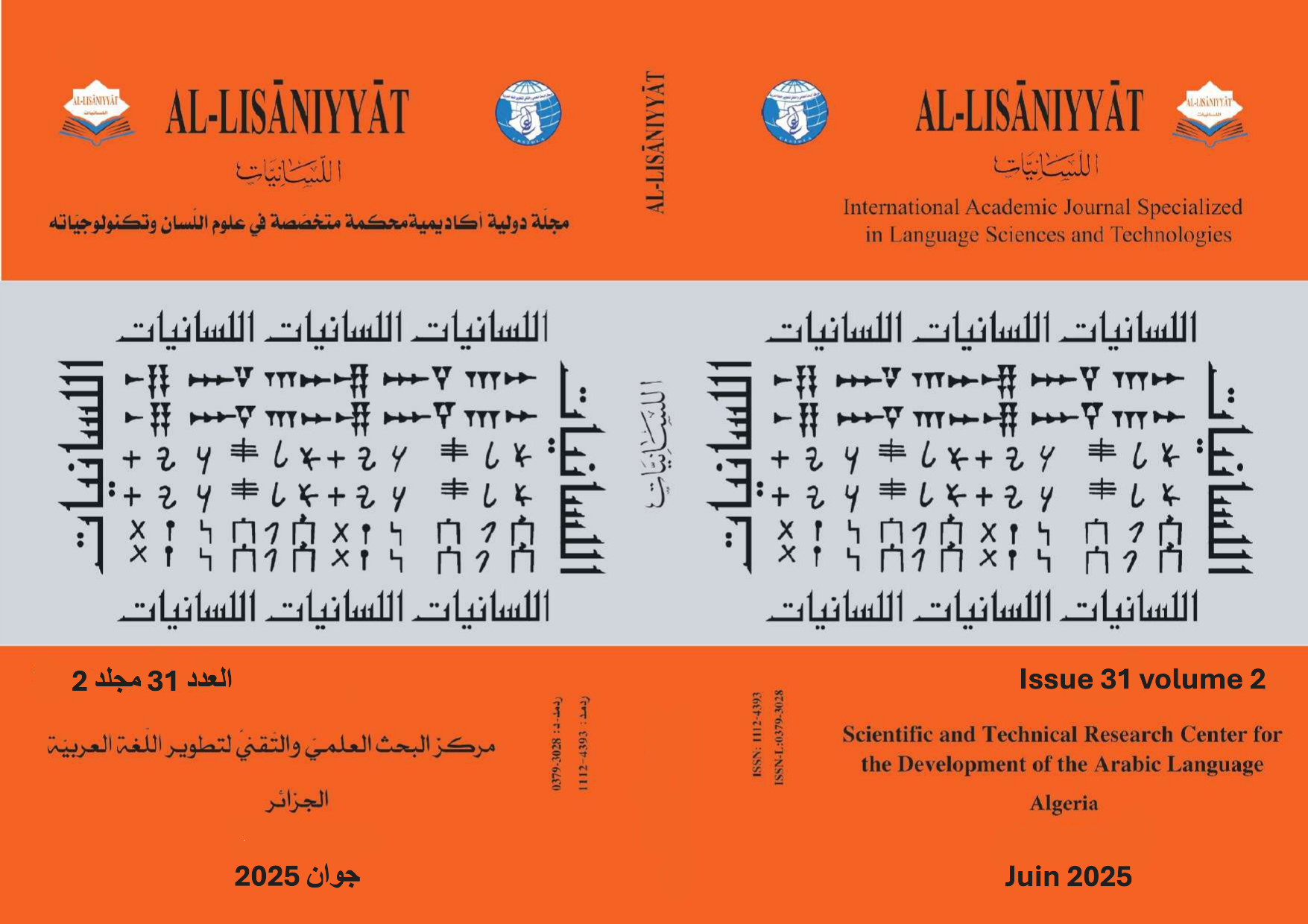Al-Lisaniyyat is a peer-reviewed and indexed academic journal published by the Scientific and Technical Research Center for the Development of the Arabic Language (CRSTDLA). The journal is dedicated to advancing linguistic research by publishing original and rigorous scientific articles and review papers that address contemporary issues in the fields of applied and computational linguistics, with a particular emphasis on the Arabic language.
The first issue of Volume 31 features twelve (12) scholarly articles written in Arabic, French, and English, contributed by researchers from both within Algeria and abroad.
This volume brings together a collection of interdisciplinary studies that explore diverse dimensions of Arabic linguistics, phonetics, language acquisition, digital discourse, and applied language sciences. At its core, the collection underscores the enduring legacy of classical Arabic scholarship while addressing pressing modern linguistic challenges across educational, social, and technological spheres. This issue includes, among others, the following notable articles:
-A foundational contribution focuses on the work of Al-Khalil ibn Ahmad al-Farahidi, particularly in Kitāb al-ʿAyn, tracing the origins of phonetic terminology. The study highlights how dialectal diversity, in the Qur’anic text, and Arabic poetry influenced early phonological theory.
-Contemporary Arabic varieties are examined through phonological analyses, including a study on vowel shortening in Wahrāni Arabic, and an investigation into dialectal markers in Tunisian digital communication—particularly the expressive use of character sequences like “hhh” in online discourse.
-Language development in children is addressed from both theoretical and empirical perspectives. The first paper applies Abderrahmane Hadj-Salah’s Neo-Khalilian theory to Arabic language acquisition, linking linguistic abstraction to cognitive growth. Another empirical study investigates spelling errors among children with intellectual disabilities, identifying error patterns and suggesting tailored pedagogical interventions.
-Lexical studies in the volume examine collocational phenomena based on Raphael Nakhla’s Dictionary of Synonyms and Homonyms, as well as the use of geographic terminology in school textbooks compared to unified educational dictionaries. These discussions emphasize the significance of lexical clarity and curriculum alignment in language instruction.
This volume reflects the richness and dynamism of contemporary research on the Arabic language, bridging tradition and innovation across multiple disciplines. We hope that the contributions presented will offer meaningful insights and answers to some of the key issues raised in the field of applied linguistics.
DOI: https://doi.org/10.61850/allj.v31i1
منشور: 2025-06-25
